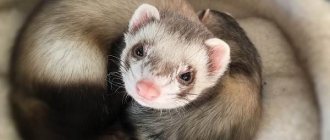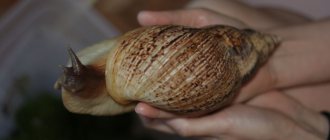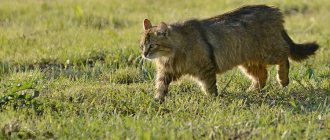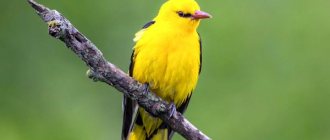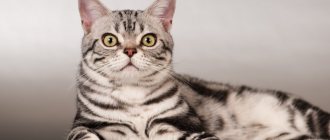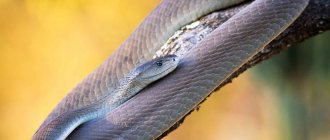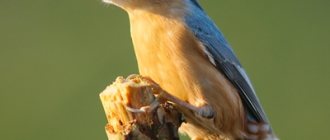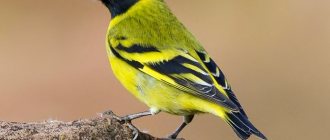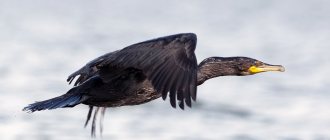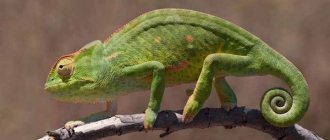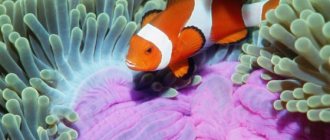The muskrat is a small semi-aquatic rodent with valuable fur. The muskrat inhabits almost the entire territory of Russia and Europe, preferring rivers, lakes and wetlands for its habitat. The basis of the animal’s diet is plant food, but animals can feast on shellfish and small river fish. Breeding muskrats at home is profitable. Food costs are small, and the cost of animal fur and meat covers all expenses.
general characteristics
Scientists classify this mammal from the order of rodents as belonging to the hamster (vole) family, identifying a single species in the genus - the muskrat. It is believed that the homeland of the animal is North America. It was from there that the animal was brought to the European continent at the beginning of the 20th century.
Muskrats have acclimatized well and spread to different latitudes. This was facilitated by a policy of targeted increase in livestock. The animals were bred for their skins. Fur products made from them were valued for the quality of their down (did not allow water to pass through) and appearance.
What the muskrat eats depends on the nature of the reservoir. Regardless of the habitat (pond, wetland, river), aquatic and riparian vegetation predominates. Muskrats spend most of their time in the water. They also prefer to get their food there, since on land they are less agile and can become easy prey for carnivorous predators.
Where does the muskrat live?
Muskrats inhabit various canals, peat lakes, streams, small and large rivers, natural and artificial reservoirs - even within the city , since the proximity to people does not deter this animal at all. It is absent only in those places where shallow water sources are prone to freezing during the winter cold. Also, the muskrat cannot be found where there is no abundant aquatic vegetation.
The muskrat lives in burrows dug along steep river banks . He makes them like a beaver - with access to water. Sometimes it can build huts in reed beds, using silt as a bonding agent. Despite the small size of the muskrat itself, its dwellings are very large - up to one and a half meters high, up to ten meters long and up to four meters wide. The length of the burrows depends solely on their location: on flat banks they are larger, on steep banks they are shorter (only two to three meters).
If a muskrat lives in swampy lowlands, it makes its home mainly from cattails, sedges, reeds and stems of other aquatic plants . Such “houses” reach a height of about one to one and a half meters. The exit from these huts also necessarily leads under water. But the muskrat can also build open floating nests for housing, which it uses mainly as feeding grounds.
Peculiarities
Sluggishness on land is one of the reasons that muskrats have adapted to live in water. There they prefer to build their homes. The burrow exit is usually located below the water level, taking into account the thickness of its freezing. The muskrat swims quickly and agilely. Its webbed feet are well adapted to this. A long tail helps to swim, hold and quickly change direction. It is round and thick at the base, and flattens out at the sides towards the end. When diving, a muskrat can hold its breath for up to 15 minutes or more. An increased amount of hemoglobin is noted in her blood, and her muscles contain myoglobin, which binds free oxygen.
How and what does a muskrat eat underwater? Another feature of the animal is the location of the incisors. They are separated from the oral cavity by the nasolabial septum. This arrangement allows them to gnaw through thick and durable stems and rhizomes of aquatic vegetation under water. The muskrat cannot choke. She gnaws off a section of the plant that she likes near the bottom, floats to the surface with it, pulls it to her favorite place (the feeding table), and calmly eats it there.
Natural enemies and diseases of muskrats
These rodents are considered natural reservoirs of many infections. They are often carriers of paratyphoid and tularemia. People involved in their fishing and processing of skins often become victims of these diseases. Often the animals themselves die as a result of critical infection with parasites, including tapeworms and liver flukes.
Muskrat
Humans are considered the most serious enemy of these creatures, since it is he who has the greatest influence on their numbers.
Due to their fertility, these semi-aquatic animals fit harmoniously into the natural food chain. Due to their webbed hind feet, rodents are very clumsy on land. Often this is where they become prey when they crawl ashore to clean and dry their fur. Many wild predators are not averse to feasting on muskrats. Coming ashore, these creatures often become prey for wolves, foxes, martens and sables. In addition, almost all birds of prey hunt muskrats. These rodents are often attacked by falcons and hawks, as well as owls and eagle owls. Muskrats also prey on domestic cats and dogs. Only in water can a muskrat feel relatively protected. Here, if necessary, she will quickly hide in a hut or hole. Among other things, moose cause significant harm to rodents. They often eat huts built from nutritious aquatic plants. A family of animals left without a home in the winter experiences the cold extremely hard.
Habitat
The body of the animal is well adapted to life in water. The head is small, the eyes are small. The body is ridged, the tail is long and mobile. The hind legs are longer and more powerful with developed membranes. The ears are small and almost do not protrude from the undercoat (red, brown).
Externally, the muskrat can be mistaken for a large goat. Its second name is musk rat. The animal really looks like this rodent. But a long and unique tail, as well as thick fur with sparse guard hairs, distinguishes the muskrat from the ordinary gray rat. The size of the animal is larger. An adult weighs up to 1.5 kg with a body length of up to 35 cm. At the same time, the muskrat’s tail can reach 25 cm. There is no significant difference between males and females.
Usually the muskrat has enough food in the pond. She also takes walks in the coastal zone, looking for food and building material for her homes. When adjacent to vegetable gardens or agricultural lands, animals can cause some damage to cultural plantings. In rare cases, when there is not enough food in the reservoir, the muskrat feeds on pond snails or other mollusks. It has been noticed that it can eat fish, frogs and even carrion. When there was severe overpopulation, cases of cannibalism were reported.
Interesting Facts
There are many interesting facts associated with the muskrat.
- Indian tribes believed that it symbolizes cunning and true male friendship.
- In captivity, the animal lives almost 3 times longer.
- In some countries, it is considered a pest due to the fact that it successfully undermines dams and other protective structures. There individuals are mercilessly destroyed.
- This rodent serves as a carrier of a number of diseases dangerous to humans and domestic animals: Omsk hemorrhagic fever, paratyphoid fever, tularemia, salmonellosis, coccidosis, paratyphoid fever.
- In the reservoirs near which the rodent lives, the oxygen regime is favorable for wintering fish due to the blowing holes in the ice created by the animals.
- For unknown reasons, the population size decreases cyclically approximately every 7 years.
The muskrat is a very flexible species, which, after being introduced into a new biological system, managed to adapt to it without causing much harm.
Lifestyle
The muskrat is active mainly at dusk and at night. During the day you can meet her during the mating season. Muskrat offspring are born 2–3 times a year. There are usually 6 – 8 cubs in a litter. They are born blind and only gain sight at the end of two weeks of age. The mother feeds the cubs with milk for almost a month. The male is allowed to raise offspring only when they can feed on their own. The female drives the older generation out of the area and they are forced to look for a new habitat.
The muskrat's fur does not get wet, although outwardly it appears stuck together. After shaking itself off on land, the animal again acquires a neat appearance. The down contains a large amount of air. It not only gives good buoyancy, but also allows you to retain body heat. The muskrat sheds from spring until late autumn.
Regardless of what the muskrat eats in the pond, it itself is full of enemies (wolves, foxes, stray dogs). When migrating, animals can travel long distances (tens of kilometers). During this period they become easy prey. Their paws are not adapted for long-term movement on land. Long tails are torn off until they bleed. Weakened animals often die without finding a suitable body of water to settle in.
Distribution and reproduction
Reproduction occurs only in the warm months: March, May and summer. Pregnancy lasts one month, the female can bring two litters per year if she lives in the northern region, or four or five if she lives in the south. From six to ten blind cubs appear at a time.
During the first week, the male brings food to the female, who does not leave the offspring.
Reproduction occurs only in warm months
Starting from the tenth day of life, the cubs already acquire the ability to swim, and after three weeks they are already actively feeding on vegetation. At the age of one month, small muskrats can already live independently, but if winter comes at this moment, then they remain with their parents and disperse in the spring.
What does a muskrat eat in summer?
The basis of its diet is aquatic and coastal vegetation. In the spring, with the beginning of the growing season, the main food is the stems of sedge and reed that have overwintered and begun to grow. Horsetails, reeds, and pondweed are well eaten. The muskrat also eats cattails and watchwort. In summer and autumn, muskrats have a rich diet. You can choose stems of underwater vegetation that have developed well in warm water or feed on their rhizomes. If desired, you can conduct an “inventory” of the coastal zone. The animal may be interested in young shoots of bushes. The muskrat can even gnaw the bark from trees; it prefers willow.
What does the river muskrat eat? Animals are not picky. Any suitable greenery can be eaten: water lily, cattail, water grass, rush grass, elodea. Muskrats quickly get used to their new surroundings. When living conditions change, the most suitable site is selected, immediately looking for a place for a possible burrow. Where food is found, feeding tables are set up. Usually this is a conveniently located dry hummock.
Diet of domesticated muskrats
When kept at home, animals are fed once a day, giving food in the morning. The only exceptions are lactating and pregnant females, who are given food twice - in the morning and in the evening. The diet of domestic muskrats differs significantly from the diet of their wild counterparts.
Domestic animals are fed washed and chopped root vegetables (beets, carrots, Jerusalem artichoke fruits), various tops, freshly cut grass (nettle, clover, wheatgrass, dandelion). Muskrats also love to eat bread, cereals, small river fish, and cottage cheese. They also do not refuse branches of bushes. Porridges are cooked from any grain using milk or whey.
In summer and autumn, it is good to diversify the diet with pumpkin and ripe fruits - apples, pears, plums, as well as young ears of corn.
In the summer months, the owners prepare meadow or cereal hay for the winter, branches of young willow and aspen, as well as foliage. Nettles are dried and ground into flour. Nettle flour is added to porridge and mixed feed.
During the breeding season, females are given about 60 grams of steamed oats or barley, about 130 grams of green grass (hay) and root vegetables, two grams of sugar and 3-4 grams of meat or fish flour, a gram of chalk and salt. Twice a week it is recommended to feed finely chopped river fish or live fry.
| Hay, g | Branches, gr | Carrot, g | Fodder beet fruits, g | Fish or bone meal, g | Salt, chalk, phosphates, g | Pine needles Crushed or herbal flour, g | |
| Adults | 17-23 | 10 | 40 | 30 | 1-2 | 0,5 | 2,5 — 3,5 |
| Young | 10-15 | 7 | 35 | 22-25 | 2 | 0,5 | 2,5 — 3,5 |
You can also prepare special granules for feeding muskrats using a simple recipe (percentages of the total weight of the food are given):
- 45 - 50% of ready-made feed (it is better to use feed for rabbits, but ready-made feed for chickens is also suitable),
- 5% fishmeal,
- 5% feed yeast,
- 40% - nettle flour,
- 0.5% regular salt.
This food is balanced and has a good effect not only on the health of the animals, but also on the quality of the fur.
What does a muskrat eat in winter?
The food supply changes with the changing seasons of the year. The muskrat cannot gain fat for wintering during the summer. She does not hibernate. Since autumn, it has been trying to collect a sufficient supply of food, dumping it in different places in the reservoir. At the beginning of winter, she can still easily find food for herself among the dying shoots of horsetails, cattails and reeds.
Later, she extracts their rhizomes located on the surface of the bottom or lying in the bottom layer of silt. If there is a lack of food, it can also eat animal food for some time. Preference is given to bivalve mollusks and pond snails. Catches crustaceans, weakened and dead fish, and can consume carrion.
What does a muskrat eat in a lake if it freezes almost completely in winter? As a rule, muskrats do not inhabit such bodies of water. The usual depth at the exit of its burrow is more than a meter. In case of severe winter or temporary bad weather, the muskrat feeds on the walls of its hut. In the fall, it begins to draw branches of bushes and fallen trees, reeds, sedge, and cattails to the construction site. Holds the stems together with clay and silt. The height of the house can reach a meter, and the pile is located in a circle with a diameter of up to two meters.
Feeding wild muskrats
The muskrat is a valuable commercial object. Many hunters note that the population of the animal is decreasing every year and the reason for this is not hunting, but a reduction in the food supply. Some hunting farms interested in fur production are engaged in artificial cultivation of plants that the animals feed on and feed the animals.
We suggest you read: What branches can be given to a chinchilla (trees)
One of the most delicious types of plants - egg capsule - is bred in two ways.
The first is more labor-intensive and less effective. People manually collect the rhizomes of egg capsules from rivers and lakes, stack them on the shore, covering them with a tarpaulin. After some time, the egg capsule is planted in a pond where muskrats live, attaching planting material to the tips of split willow twigs. This allows you to secure the rhizomes in the pond.
The second method involves planting egg capsule seeds. The seed capsule is cut off along with the stem. The seeds are poured into a fishing trap and secured on a peg driven into the bottom of the reservoir. The top of the trap should protrude 15-20 cm above the water. As it ripens, the box opens and the seeds scatter, but do not sink to the bottom.
Another type of plant, water chestnut, is propagated and sown in a similar way. The fruits ripen in early autumn and are collected and placed in a fishing trap with burlap. About 50 - 55 kg of nut seeds are required per hectare of lake area. The large mass of seeds is due to the low percentage of germination. To prevent muskrats from eating the seeds, a special mesh of slats is installed on the bottom of the lake. These two simple methods have proven effective and have increased the number of animals in formerly deserted areas.
To do this, special feeders are installed near huts or feed pantries or food is scattered on the snow.
Breeding
Muskrats are raised in private and special farms mainly to obtain skins for fur. Inexpensive fur coats, hats, and accessories are made from such raw materials. The fur is light, repels water well and lasts for several seasons. After 4–5 years of use, the products still lose their appearance.
The meat of the animals is also edible and in some places can be considered a delicacy. It tastes somewhat like hare meat and was formerly called “swamp rabbit.” In folk medicine, fat is used for rubbing. The secretion of the male glands, located on the stomach in the groin area, has a pungent musky odor. Animals use it to mark the boundaries of their territory. It can also be used in the perfume industry.
What does a muskrat look like?
The animal is a rodent, very large and cute. The length of its body, including its tail, ranges from 0.4 to 0.6 m, and its weight, regardless of the availability of food, can be from 700 grams to 2 kilograms.
The muskrat's fur coat is luxurious, has a color from light brown to brown, it is the reason for hunting rodents, it covers the entire body, but the tail is completely devoid of fur. Nature deliberately left him bald, because thanks to this, heat exchange processes occur faster, which is very important, because the animal spends most of its time in water.
And the tail is a storehouse of provisions, like the hump of a camel. Fat is deposited in it, which maintains the viability of the rodent during the hungry winter months.
The muskrat is believed to be the ancestor of rats, which evolved to swim more easily.
- The animal’s body is elongated, its paws have membranes, and its tail is slightly flattened (of course, not like a beaver’s, but still makes swimming easier).
- The muskrat's lungs have also changed - thanks to the evolution of the organ, the animal can stay under water for up to 20 minutes.
- The undercoat is dense and water-repellent. Thanks to the sebaceous glands, which enrich the fur with fat, the muskrat does not freeze even in cold water.
- The rodent's head is small and elongated. The button eyes are set high, which allows you to scan the territory for the presence of enemies, practically without surfacing from under the water.
- The ears are neat, pressed tightly to the head, this prevents them from getting frostbitten on winter days.
- The peculiarity of the structure of the muskrat's mouth is that the incisors pass through the upper lip. This allows the animal to gnaw off vegetation at depth without drinking too much water.
- There are special muscles in the nostrils that close tightly when the rodent is immersed under water, and this prevents liquid from entering the respiratory tract.
- There is a lot of hemoglobin in the blood, and this allows you to saturate the body with oxygen during prolonged stay under water.
Now you know what a muskrat looks like. But it is too early to end the description of the species. Let's look at his habits, lifestyle and other useful information.
Captivity
When reared artificially, the food supply differs from what a muskrat eats in a pond or other natural body of water. Animals are bred in enclosures or cages with access to a fenced part of the reservoir. When building a nest, branches and other building materials are thrown in. Muskrats do not build large nests in artificial environments. If it is impossible to provide access to a pond, a basin is placed in the cage where the animals will bathe. The water is changed twice a day.
They eat almost everything that is given. They eat vegetables well. They will not refuse fresh dandelion grass and wormwood. They will happily eat mown coastal vegetation. You can give sprouted wheat, boiled porridge, bread. As an additive to food during the growth period, it is advisable to add small amounts of food of animal origin: cottage cheese, milk, meat and fish products.
With proper care and good maintenance, muskrats get used to humans relatively quickly. There are known cases when these animals lived next to people as pets. Although this method of detention can be dangerous. The muskrat is still an animal of the wild. In addition, they can carry certain types of diseases.
Relationships with people
The small muskrat is not dangerous for humans. It can only cause damage to farmers, as it will not refuse to eat vegetables or grains. Because animals dig tunnels in the banks, they can damage irrigation systems.
Muskrat is considered one of the main types of fur trade. Thanks to its fertility, its numbers are at a high level. In addition, animals easily adapt to changes in their environment.
However, for unexplained reasons, once every 6-10 years the number of individuals decreases sharply. Then their numbers return to their previous values.
The muskrat is a small rodent that leads a predominantly aquatic lifestyle. Despite its apparent clumsiness on land, the animal is very agile in the water. The webbed hind legs and waterproof fur help him with this.
Muskrats live near bodies of water, dig holes with long corridors and build huts as shelter. They feed mainly on plant foods - aquatic plants, young shoots, seeds, roots.
Their diet includes a small amount of animal feed. Muskrats consume crayfish, small fish, and shellfish. They live in large family groups. Due to high fertility, their numbers remain stable.
Video
Winter diet
The winter diet of animals is less varied. They prepare thoroughly for the onset of cold weather, making supplies not far from the reservoir. It’s funny to watch how a well-fed animal stomps along the shore of a reservoir with branches in its teeth that are several times larger than its size. Until late autumn, muskrats find themselves withered and freezing food.
With the beginning of winter, the main food is rhizomes, but since it becomes more and more difficult to find them, animals switch to fish, crustaceans, mollusks and other living creatures.
In severe frosts, when the contents of the storerooms are already empty, the muskrat gnaws the walls of its house, made of willow branches, reeds and sedge.
Breeding season for muskrats
Females are capable of producing 1-2 litters per year in northern regions, but in warm regions they can have up to 3-5 litters. At the beginning of spring, the mating season of these creatures begins. After mating, the female remains pregnant for about a month. Around the end of April, 7-8 naked and blind cubs appear in the nesting chamber or hole. The weight of a newborn rodent is about 22 g. The female feeds them with milk for 35 days. The young are quickly formed and overgrown with wool. Their eyes open 3-5 days after birth. Already on the 10th day they learn to swim. At the end of the month, the cubs begin to introduce plant foods into their diet.
Thus, 4 weeks after birth they become completely independent. During the winter, the young remain with their parents. Usually, cubs reach sexual maturity at 7-12 months of life. In spring, the females themselves drive the juveniles away from their territory. Usually the young go on a long journey to find a suitable territory for establishing a new colony. Often, individuals separated from their families die in the first winter. Despite their increased fertility, muskrats in their natural environment usually do not live more than 3 years. This is due to difficult conditions and the presence of many natural enemies. In captivity, these creatures often lived up to 10 years.
It is now known that there are natural cyclical fluctuations in the number of muskrats. Every 6-10 years their population can decline to critical levels. What causes this phenomenon is currently unknown.
Human interaction
In areas where muskrats live, people raise entire farms. Fishermen help rodents set up huts in the most difficult places; for this purpose, rafts are built from reeds or other plants, then the muskrat itself builds a dwelling from the foundation. But it’s not only in the wild that people breed musk rats; they create farms for breeding this fur-bearing animal, where they are raised specifically for their fur.
You can also keep a muskrat at home. This is a very cute, funny and affectionate pet. She is smart, active, and will contact people.
In order for the animal to feel good, live long and not get sick, it needs to create special conditions:
- Spacious enclosure with an artificial pond or swimming pool. The muskrat needs to constantly bathe and wash its eyes.
- A hut must be installed in the enclosure, or conditions must be created for its construction by the rodent itself.
- Change the water in the pool at least once every three days (preferably more often).
- The diet should be as close to natural as possible; there should be a lot of vegetation.
If you want to have a pair of muskrats that will breed, then that is also possible. To increase the birth rate, at the age of one month, the cubs are separated from their parents - this way additional offspring can be achieved.
Origin of the species and description
The muskrat is a rodent mammal that spends a huge period of its short life in water. She is the only representative of her species and genus of muskrat rodents. Their population originated in North America, where animals live throughout the continent, and humans brought the muskrat to Russia, Northern Asia and Europe, where it has settled remarkably well.
Scientists hypothesize that the muskrat's ancestors were voles. They were much smaller, and their teeth were not as strong and powerful as those of musk rats. Then the animals migrated closer and closer to the territory of North America, the species began to move to a semi-aquatic, and then semi-aquatic way of existence. It is believed that it was then that animals developed all the interesting features that allowed them to stay in water for a long time, namely:
- a large flat tail with almost no hair;
- webbed hind legs;
- waterproof wool;
- an interesting structure of the upper lip, allowing the front incisors to gnaw algae under water without opening the mouth.
It is assumed that the animals increased significantly in size due to being more adaptable in building their homes: burrows, huts. Their large size allows muskrats to save their energy and be much stronger.
Whatever one may say, all the metamorphoses that occurred during the evolution of the appearance of this species of animal are associated with its reorientation to a semi-aquatic lifestyle.
LiveInternetLiveInternet
Muskrat, or musk rat (Ondatra zibethica) The muskrat, a native of the North American continent, was first brought to Europe in 1905 and released near Prague.
There are ten pairs in total. The original animals quickly got used to it, began to rapidly multiply and spread, and ten years later there were... about two million of them. By 1933, the muskrat already covered two hundred thousand square kilometers in Western European countries. When it was brought to Finland in 1922, it began to spread there not just successfully, but rapidly. The muskrat was brought to the Soviet Union from North America in 1928. And a few years later, almost throughout our entire country, from Ukraine to Kamchatka and from Central Asia to the Arctic Circle, they began to spread their muskrats - the animal multiplied so quickly. From our country, the rodent penetrated into China, Korea and Mongolia and there also formed numerous populations. In a short time, muskrat farming has grown into a new branch of hunting.
The scale of muskrat acclimatization in our country is simply amazing. In forty years, three hundred thousand animals have been resettled and released! From 1937, when organized catching of muskrats began, to 1980, over one hundred and twenty million valuable skins of this animal were harvested.
The muskrat is a typical rodent from the mouse family, subfamily of voles. It looks like a rat in appearance, which is why it is often called a musk rat, only its size is much larger, let’s say a pasyuk - on average about a kilogram, sometimes up to almost two.
Its body is ridged, its neck is short, its head is small, blunt-faced, its eyes are small, its ears are short, its mustache is long and stiff. The lips are designed in such a way that they can close between the incisors and molars, thanks to which the rodent can chew off plants underwater without choking. The tail is long, covered in scales, almost without hair. The legs are short, but with strong claws adapted to dig the ground. On the hind legs, between the long toes, there are swimming membranes and coarse hair grows. These paws are the “oars” of the animal. The animal presses its front ones to its body while swimming. The tail is the rudder. Here is a complete portrait of the new resident.
The muskrat leads a semi-aquatic lifestyle. But her body is not streamlined, has poor hydrodynamic qualities, and she is not a good swimmer. The wedge-shaped body with the greatest thickness in its rear part causes strong turbulence in the water. But when running “quietly,” the animal is hardy and an excellent diver: it can survive without air for up to ten to twelve minutes.
The muskrat is colored soft brown on top and grayish-bluish below. Black individuals are less common. The fur is thick, very dense and lush. The hair of the underfluff is not only thick, but also crimped at the ends, which makes it dense and waterproof. In the water, the muskrat becomes covered with air bubbles, the fur from these bubbles turns silver, remaining dry.
To maintain the “moisture resistance” of the fur, the animal constantly monitors it: lubricates it with fatty secretions, combs it. He also has an adaptation to the “mphibiotic” lifestyle: an increased content of hemoglobin in the blood, and in the muscles of myoglobin creates additional reserves of oxygen, which is why he can stay under water for a longer time.
The muskrat loves quiet bodies of water with an abundance of aquatic and coastal plants. They make their dwellings in burrows along the banks or in huts, which they build on hummocks and in flooded lowlands. In its way of life, it is in many ways similar to the beaver, and it is not for nothing that in America the Indians call the muskrat the beaver’s younger brother. Muskrat meat is tender and tasty. In America it is considered a delicacy. That's why the animal is called a water rabbit there.
But in our country, rarely does anyone admit the idea that this rat can be eaten. The appearance of the animal is really somehow “inedible”; the long rat tail is especially confusing.
The main food of the muskrat is the succulent rhizomes and shoots of sedge, wild rice, three-leafed grass, arrowhead, reeds, reeds, pondweed, and water lilies. Eats the most delicious and nutritious parts of plants. It eats small animal food, mainly mollusks, colloquially called shells. He eats fish very rarely, and only dead ones, and even less often - crayfish, frogs, and insects.
Source
You will learn interesting facts about the muskrat and the life of muskrats in this article.
Interesting facts about the muskrat
The lifespan of a muskrat in nature is 3-4 years. In captivity, some animals live up to 10 years.
The muskrat is considered by many tribes to be a symbol of cunning and true male friendship.
In the USSR, the peak popularity of products made from muskrat fur was in the 70s and 80s. Then the price of one muskrat cap sometimes reached the amount of two months’ salary.
Muskrat meat is edible and tastes vaguely like duck.
Their teeth are very strong and sharp
Muskrat musk (an oily secretion of the scent glands) is highly valued in the cosmetics industry.
Animals can be underwater for up to 20 minutes and swim at a speed of 5 kilometers per hour. They can swim back and forth.
Muskrats follow trails that they make in swamps and ponds. When the water freezes, they continue to move along their paths, but under the ice.
The female muskrat gives birth several times a year. Pregnancy lasts from 28 to 30 days and ends with the appearance of 6-7 cubs, naked and blind. The cubs depend on their mother for the first month of their lives. After 6 weeks, young muskrats can leave the den.
In many European countries, muskrats are considered pest animals and are actively exterminated; especially in the Netherlands and Belgium, where muskrat holes destroy the banks of canals and ponds, dams and dikes, and the animals themselves spoil fishing nets.
The muskrat, or musk rat (lat. Ondatra zibethicus) is a mammal of the subfamily of voles of the order of rodents; the only species of the muskrat genus. This semi-aquatic rodent is native to North America, acclimatized in Eurasia, including Russia.
Outwardly, the muskrat resembles a rat (it is often called a musk rat), although it is noticeably larger than the usual pasyuk (gray rat) - the weight of adult individuals can reach 1.8 kg, although, as a rule, they weigh 1-1.5 kg. Body length is 23-36 cm, tail length is almost equal to body length - 18-28 cm. Sexual dimorphism is not pronounced.
The muskrat's body is thick, the neck is short, the head is small and blunt-faced. Its appearance indicates adaptation to an aquatic lifestyle. The ears barely protrude from the fur; The eyes are small, high set. The lips, like those of beavers, grow over the incisors, isolating them from the oral cavity, thanks to which the muskrat can bite off plants under water without choking. The tail is flattened on the sides, covered with small scales and sparse hairs; A ridge of elongated, coarse hair runs along its underside. There are swimming membranes on the hind legs, and a border of short hairs along the edges of the toes.
The muskrat's fur consists of coarse guard hairs and soft undercoat. The color of the back and limbs ranges from dark brown to black. The belly is lighter, sometimes grayish-blue. In summer the color brightens. The fur is very thick, dense and lush, which makes it waterproof. The muskrat constantly monitors its fur: lubricates it with fatty secretions and combs it.
Another adaptation to the aquatic lifestyle is the increased content of hemoglobin in the blood and myoglobin in the muscles, which creates additional oxygen reserves when diving under water. Another special adaptation is heterothermy, the ability to regulate blood flow to the limbs and tail; A muskrat's limbs are usually colder than its body.
Useful materials:
- Pictures about Chihuahua Dog breeds: Chihuahua (50 photos) The love for dwarf decorative dogs has swept the whole world. For today...
- Pekingese life expectancy How long do Pekingese live Every person who decides to get a Pekingese needs to be psychologically prepared for the fact that a pet...
- Medium-sized dogs Australian Shepherd or Aussie Australian Cattle Dog or Australian Heeler Australian Kelpie Austrian Hound American…
- Polydactyl Maine Coon Breeding polydactyl cats Before breeding kittens with extra toes, you need to know that cats...
